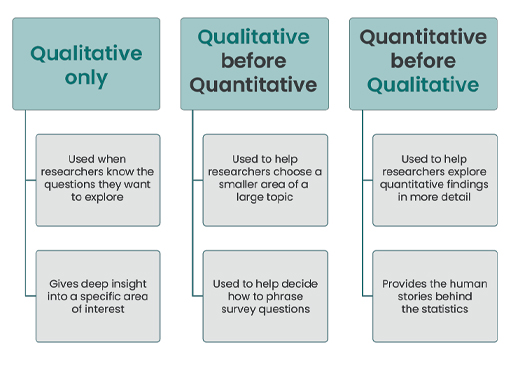1.1 When are qualitative interviews useful?
Qualitative interviews can be used on their own or in combination with other methods. Sometimes, the researcher will know the questions they want to ask, and will not need numerical or representative data. For example, in the Reproductive Bodylore project, we wanted to ask people about their knowledge and experiences of contraception. In this situation, it may be most appropriate to use qualitative interviews as the only method to explore a topic.
In other cases, qualitative interviews may be used alongside quantitative methods, such as surveys. If the researcher knows the general area they want to gather data about, but:
- the area is too broad
- it is unclear what issues are most important to people
- it isn’t clear what questions should be asked, or how they should be phrased.
They might want to ask a few people from a group (or research population) some questions to narrow down the right questions to ask a larger group of people. In this case, qualitative interviews would be carried out first, and the data would inform the design of a second, quantitative stage of the research.
In other cases, researchers may have gathered some quantitative data, such as survey results, or the analysis of a set of records, but may want to understand the reasons for patterns they’ve found in the data. In this case, qualitative interviews might be used with a smaller group (or sample) who are recruited from the research population. Asking this group questions about their experiences or opinions may help the researcher interpret the data they have gathered in the first stage of the research.

